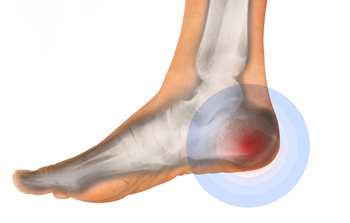
The pain that is associated with the foot condition that is known as Morton’s neuroma is generally found in the ball of the foot. It happens as a result of a compressed or irritated nerve between the third and fourth toes, and it occurs more frequently in women. Wearing high heels may be a common cause for Morton’s neuroma to develop. More often than not, the toes may have limited room to move freely in, and the nerve may become inflamed. Common symptoms of this ailment include a burning sensation in the ball of the foot, and some patients describe the feeling as similar to standing on a marble or pebble. Additionally, the toes may be affected as the pain radiates through the foot, and can be uncomfortable. A proper diagnosis is needed to rule out arthritis or a fracture, and this is accomplished by having an X-ray taken. If you have pain in this part of your foot, a podiatrist can provide you with answers to questions you may have, and guide you toward the treatment that is best for you.
Morton’s neuroma is a very uncomfortable condition to live with. If you think you have Morton’s neuroma, contact one of our podiatrists of Foot Health Center of Merrimack Valley. Our doctors will attend to all of your foot care needs and answer any of your related questions.
Morton’s Neuroma
Morton's neuroma is a painful foot condition that commonly affects the areas between the second and third or third and fourth toe, although other areas of the foot are also susceptible. Morton’s neuroma is caused by an inflamed nerve in the foot that is being squeezed and aggravated by surrounding bones.
What Increases the Chances of Having Morton’s Neuroma?
- Ill-fitting high heels or shoes that add pressure to the toe or foot
- Jogging, running or any sport that involves constant impact to the foot
- Flat feet, bunions, and any other foot deformities
Morton’s neuroma is a very treatable condition. Orthotics and shoe inserts can often be used to alleviate the pain on the forefront of the feet. In more severe cases, corticosteroids can also be prescribed. In order to figure out the best treatment for your neuroma, it’s recommended to seek the care of a podiatrist who can diagnose your condition and provide different treatment options.
If you have any questions, please feel free to contact one of our offices located in North Andover, and Tewksbury, MA . We offer the newest diagnostic and treatment technologies for all your foot care needs.










